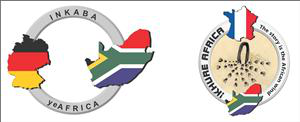Speaker
Ms
Moipone Precious (obo Divan Stroebel) Mokoena
(AEON - NMMU)
Description
The anticipated exploration and exploitation of Karoo Shale Gas has raised considerable debate about the benefits and risks associated with this process for both the Karoo, and the country as a whole. Focus has been placed on the potential impact of hydraulic fracturing on ecological, environmental and especially its scarce water resources. The Karoo region is highly dependent on groundwater as an important water resource and it will become increasingly so. Thus, groundwater management and the sustainability thereof are of prime importance.
This research will aim to hydrochemically characterise both the shallow groundwater (<300m) and deeper saline groundwater in the vicinity of the Shale Gas bearing formations, based on major and trace elements, as well as gas isotope analyses. Sampling will include water sampling and gas measurements from shallow boreholes (<300m), SOEKOR drillholes (oil exploration holes drilled in the 60’s and 70’s up to 4km deep) and thermal springs (source of water >500m).
To-date, a desktop study includes the collation of information determining the areas with the highest potential for Shale Gas Exploration throughout the Eastern Cape Karoo. All recorded boreholes obtained from online databases of the Department of Water Affairs (DWA) have been spatially visualised in these areas. A Hydrocensus will follow, during which downhole electrical conductivity profiling of the water column will be recorded. Borehole selection will be finalised from the acquired information. These boreholes will be sampled a minimum of three times which will occur after summer (April/May) and winter (October/November). The sampling will be preceded by purging of all inactive boreholes.
The hydrochemical results will be presented as chemical ratios by use of graphs, Piper Diagrams, Durov Diagrams and Expanded Durov Diagrams. Relevant parameters will be compiled and translated into spatial GIS maps.
The possible hydraulic connectivity between the shallow and deep aquifers will be tested, particularly in those areas where dolerite intrusions as well as fault systems may enhance preferential flow of water, using the chemical forensics complemented with passive seismic profiling/imaging and deep penetrating Magneto-Telluric imaging.
The research is critical for the successful governance of groundwater in light of the proposed Shale Gas development. In its absence, effective regulation of the sector will not be possible.
Primary author
Mr
Divan Stroebel
(AEON : Karoo Shale Gas Research Programme)
Co-author
Prof.
Maarten De Wit
(AEON - Karoo Shale Gas Research Programme)

